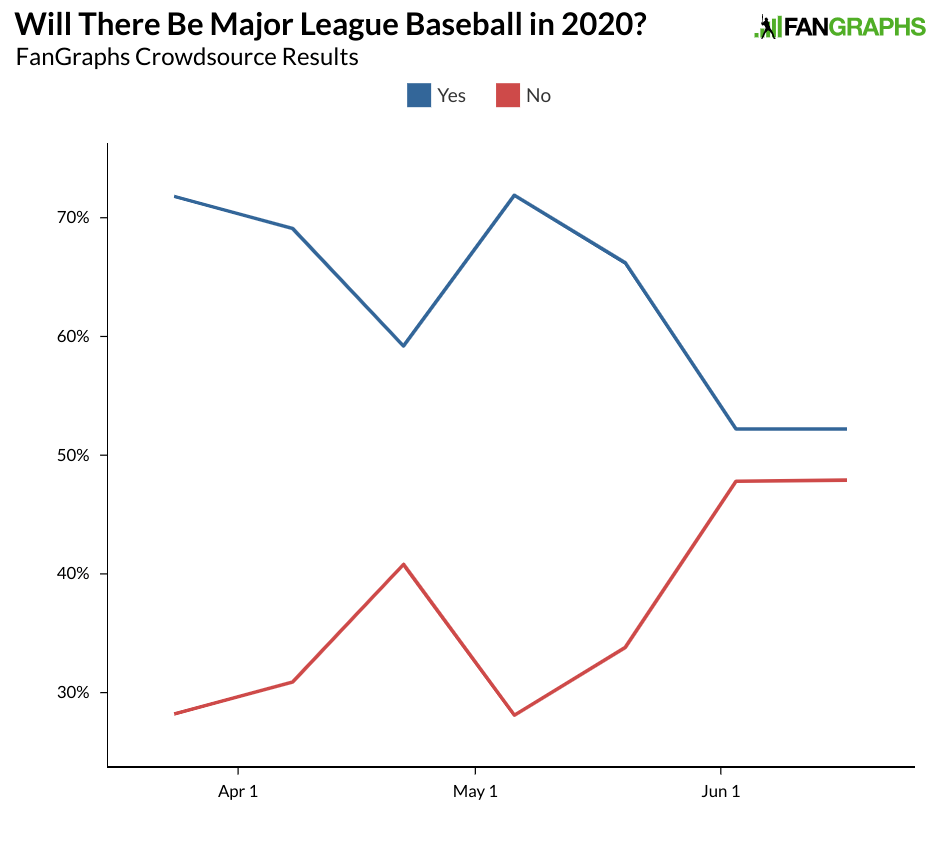Four Things We Learned from 60-Man Player Pool Day
With players set to report to camp on July 1, yesterday was the day teams submitted their 60-man player pools to MLB. While there is certainly going to be considerably more maneuvering as teams set up their own camps (plus a satellite camp for those pool players not invited to major league camp), teams’ initial rosters can tell us a little about how clubs plan to operate over the next few weeks and potentially into the season. Here’s what we can say so far.
A 60-Man Player Pool is Not a 60-Man Player Pool
While we were perhaps expecting a 60-man player pool for every team, many clubs fell far short of that number. You can check every team’s initial selections on our Roster Resource Opening Day Tracker; those pages also project Opening Day rosters. Overall, teams put out rosters averaging 53 players. The Indians, Tigers, Royals, Astros, Angels, Yankees, Mariners, Rays, Rangers, Blue Jays, Braves, Reds, Marlins, Phillies, Pirates, Padres, and Nationals were all at capacity or were a handful of players away from reaching the 60-player limit. The Diamondbacks, Twins, and Giants didn’t even release rosters yesterday, while the Orioles, White Sox, Brewers, and Cardinals were all at 45 players or fewer. We will have to wait for full roster information on about half the teams.
Placement in the Player Pool is Pretty Permanent
Later this week, Jay Jaffe is going to analyze the roster rules contained in the 2020 Operations Manual and how they will affect the season, but one wrinkle in particular caught the attention of twitter yesterday, including The Athletic’s Levi Weaver. That wrinkle concerns how players are moved in and out of the 60-man pool depending on their 40-man status. Per the Operations Manual:
In the event a Club is at the limit and wishes to add a player to its Active Roster or its Alternate Training Site, the Club must select a player to be removed from the Club Player Pool by means of a bona fide transaction, as follows:
- 40-man roster players may be removed from the Club Player Pool by an approved trade, waiver claim, return of Rule 5 selection, release, outright assignment, designation for assignment, placement on the 60-day Injured List, placement on the COVID-19 Related Injured List, or placement on the Suspended List (by Club), Military, Voluntarily Retired, Restricted, Disqualified, or Ineligible Lists.
- Non-40-man roster players may be removed from the Club Player Pool by an approved trade, release, placement on the COVID-19 Related Injured List, or placement on the Military, Voluntarily Retired, Restricted, Disqualified, or Ineligible Lists. Injured non-40-man roster players will continue to count against the Club Player Pool limit unless removed through one of the permitted transactions listed above.

